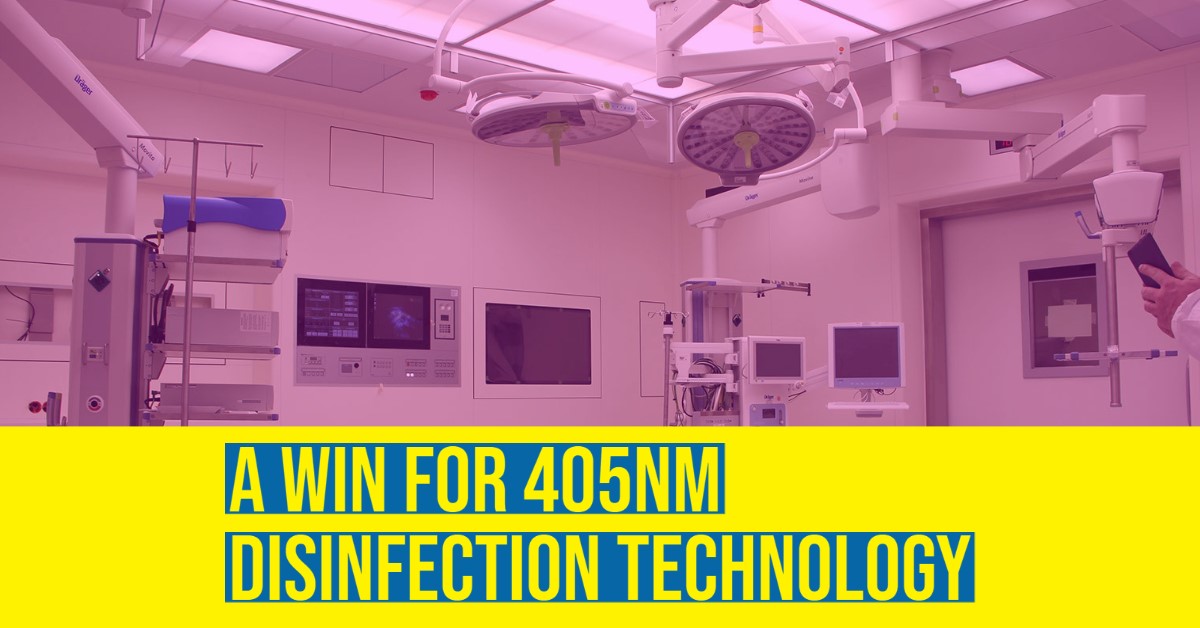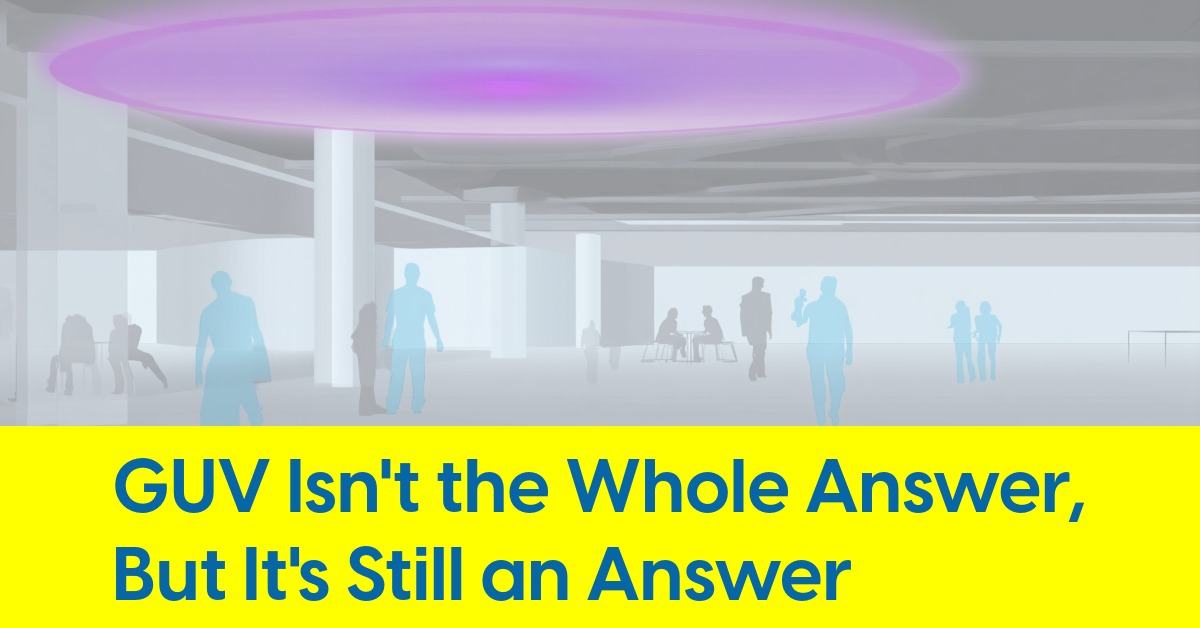November 15, 2021
A Win for 405nm Disinfection Technology

On appeal, the patent board overturns a 2020 ruling, thus strenthening the enforcability of the patent licensed to Kenall, Hubbell Lighting, Focal Point and others.
The University of Strathclyde is a patentholder of some important technology behind 405nm disinfection lighting products. Multiple lighting manufacturers license the technology from Strathclyde.
Patent licensees in the U.S. market include Legrand’s Indigo-Clean platform that is rolled out across Kenall, Focal Point, Finelite and Pinnacle Architectural Lighting. Hubbell Lighting uses the Strathclyde High Intensity Narrow Spectrum (HINS) technology in its SpectraClean product platform.
Light at the 405nm wavelength NOT ultraviolet light. The light is indigo-colored light in the visible light spectrum and has been proven to kill staph such as MRSA and other pathogens. Recent studies have also concluded that it also is effective at deactivating the virus that causes COVID-19.
In 2018, Kenall and the University of Strathclyde filed a lawsuit against Visa Lighting for patent infringement relating to light disinfection. That case was settled in May 2020. The ’706 patent and two other patents were cited in two other separate patent cases against Clear-Vu Lighting in 2018 and 555 Int’l, Inc. in 2017.
In September 2020, the Patent Trial and Appeal Board (PTAB) of the United States Patent and Trademark Office (USPTO) determined in that certain claims of the Strathclyde ‘706 patent were unenforceable. Strathclyde appealed the ruling, and the board has ruled that certain claims of the patent are indeed enforceable.
Legal experts are referring to this patent appeal case as "precedential" and may use the ruling to support future intellectual property disputes where "obviousness" is a question of law based on underlying findings of fact.
This ruling reverses a 2020 decision that partially invalidated Strathclyde's intellectual property claims. This now reaffirms the ability of Strathclyde and their licensees to enforce the patent that protects the High Intensity Narrow Spectrum (HINS) technology.
More Background:
- In 2018, Clear Vu filed a motion with United States Patent & Trademark Office challenging three Strathclyde patents -- including the ‘706 patent. An Inter Partes Review was launched to explore the enforceability of the patents.
- In 2019, the patent judges dismissed the motion on 2 of the 3 Inter Partes Reviews. The denial cited procedural reasons and not technical reasons relating to the intellectual property. The judges claimed that the plaintiff failed to show "that the Petitions name all real parties in interest" and "that the proceedings are not time barred."
- July 2020: The review of the ‘706 Patent was before a panel of three Administrative Patent Judges from the Patent Trial and Appeal Board (PTAB) which issued a decision holding that the ‘706 Patent’s claims were unpatentable.
- On September 8, 2020 the University of Strathclyde filed an appeal of the PTAB’s decision to the U.S. Court of Appeals for the Federal Circuit.
- In November 2021, the PTAB reversed the 2020 ruling and upheld the Claims 1–4 of Strathclyde’s ‘706 patent.
Don’t miss the next big lighting story…Click here to subscribe to the inside.lighting InfoLetter |









